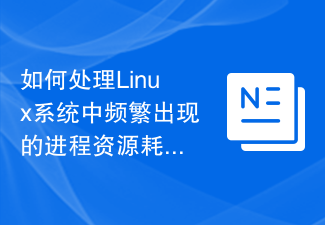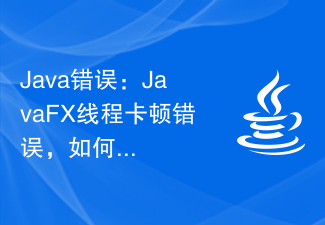How to deal with data desensitization issues in C development
With the rapid development of information technology, data security issues have received increasing attention. In C development, data desensitization is an important security measure designed to protect sensitive data from unauthorized access and disclosure. This article will introduce what data desensitization is, why data desensitization is needed in C development, and how to deal with data desensitization issues in C development.
1. What is data desensitization
Data desensitization is a process of converting sensitive data into a form that does not contain sensitive information. Through desensitization, the true value of sensitive data can be hidden, protecting user privacy and data security. Data desensitization technology is usually used in scenarios such as database management, logging, and data analysis.
In C development, common sensitive data includes but is not limited to personal ID number, bank account number, mobile phone number, etc. If this data is obtained by malicious attackers, it may lead to serious personal privacy leaks or financial security issues.
2. Why data desensitization is needed in C development
In C development, data desensitization is a very important security measure. Here are a few main reasons:
- Protect user privacy: There is a large amount of sensitive data in modern applications, such as users’ personal information, account passwords, etc. Through data desensitization measures, user privacy can be effectively protected and sensitive data can be prevented from being accessed and utilized by unauthorized persons.
- Compliance with regulatory requirements: Each country and region has a series of laws and regulations that require companies to protect the security and privacy of customer data. When handling sensitive data, you must comply with relevant data security and privacy protection laws and regulations, and meet compliance requirements through data desensitization.
- Prevent data leakage: Data leakage is a common security threat, and attackers may obtain sensitive data through various means. Through data desensitization technology, the risk of data leakage can be minimized, and even if the data is stolen, the real sensitive information cannot be used.
3. How to deal with the problem of data desensitization in C development
In C development, the implementation of data desensitization involves the following aspects:
- Develop security specifications and standards: Developers should develop unified security specifications and standards to clarify the classification and protection level of sensitive data. Based on actual needs, decide which data desensitization solutions to adopt, such as partially hiding characters, forging data, etc.
- Choose the appropriate data desensitization algorithm: Select the appropriate data desensitization algorithm according to actual needs. Common data desensitization algorithms include replacement, encryption, randomization, etc. According to different scenarios and characteristics of sensitive information, select the best algorithm to achieve data desensitization.
- Implement desensitization measures: Implement specific desensitization measures in the code according to needs. For string type data, you can use string mask, character confusion and other methods to hide the real value; for numeric type data, you can encrypt or partially hide it.
- Perform validity verification: After implementing data desensitization measures, validity verification is required to ensure that the desensitized data can still maintain the original business logic and functions and achieve the expected desensitization effect. During the verification process, attention should be paid to ensuring that the desensitized data can be irreversibly restored to the original sensitive information.
- Logging audit: Add a logging function to the code to record the desensitization process and results of sensitive information in a timely manner. This is very important for subsequent tracking and auditing, and can also help find security vulnerabilities and improve desensitization measures.
To sum up, data desensitization is a crucial security measure in C development. By desensitizing sensitive data, developers can effectively protect user privacy, comply with relevant regulatory requirements, and prevent data leakage. To implement data desensitization efficiently, developers should develop security specifications and standards and select appropriate desensitization algorithms. At the same time, conducting validity verification and logging audits is essential. Only by comprehensively and rigorously handling the issue of data desensitization can the security and reliability of applications be ensured.
The above is the detailed content of How to deal with data desensitization issues in C++ development. For more information, please follow other related articles on the PHP Chinese website!
 使用PHP处理PDF文件的方法Jun 19, 2023 pm 02:41 PM
使用PHP处理PDF文件的方法Jun 19, 2023 pm 02:41 PMPDF文件作为一种通用的文件格式,被广泛应用于各种应用场景,如电子书、报表、合同等等。在开发过程中,我们常常需要对PDF文件进行生成、编辑、读取等操作。而PHP作为一种脚本语言,也能够轻松地完成这些任务。本文将介绍使用PHP处理PDF文件的方法。一、生成PDF文件生成PDF文件有许多方法,其中最常见的是使用PDF库。PDF库是一种生成PDF文档的工具,它为
 如何处理Linux系统中频繁出现的进程资源耗尽问题Jun 29, 2023 am 09:58 AM
如何处理Linux系统中频繁出现的进程资源耗尽问题Jun 29, 2023 am 09:58 AM如何处理Linux系统中频繁出现的进程资源耗尽问题概述:Linux系统下,有时会出现进程资源耗尽的情况,如CPU负载高、内存占用过多等问题。这些问题可能导致系统性能下降,甚至系统崩溃。本文将介绍一些解决进程资源耗尽问题的常见方法。一、定位问题:监测系统资源:使用top、htop等工具监测系统资源的使用情况,包括CPU、内存、磁盘和网络等。查看进程:使用ps命
 CakePHP如何处理文件上传?Jun 04, 2023 pm 07:21 PM
CakePHP如何处理文件上传?Jun 04, 2023 pm 07:21 PMCakePHP是一个开源的Web应用程序框架,它基于PHP语言构建,可以简化Web应用程序的开发过程。在CakePHP中,处理文件上传是一个常见的需求,无论是上传头像、图片还是文档,都需要在程序中实现相应的功能。本文将介绍CakePHP中如何处理文件上传的方法和一些注意事项。在Controller中处理上传文件在CakePHP中,上传文件的处理通常在Cont
 CakePHP如何处理多语言?Jun 06, 2023 am 08:03 AM
CakePHP如何处理多语言?Jun 06, 2023 am 08:03 AMCakePHP是一个流行的PHP开发框架,它可以帮助开发者快速构建高质量的Web应用程序。随着全球化的发展,越来越多的应用需要支持多语言,CakePHP也提供了相应的支持。本文将介绍CakePHP如何处理多语言。一、多语言支持多语言支持是CakePHP的一项重要功能。从版本2.0开始,CakePHP支持gettext文件格式,该
 PHP语言开发中如何检测和处理空值错误?Jun 11, 2023 am 10:51 AM
PHP语言开发中如何检测和处理空值错误?Jun 11, 2023 am 10:51 AM随着现代Web应用不断发展,PHP作为其中最流行的编程语言之一,被广泛地应用于网站开发中。但在开发过程中,经常会遇到空值错误,而这些错误会导致应用程序抛出异常,进而影响用户的使用体验。因此,在PHP开发过程中,如何检测和处理空值错误,是程序员们需要掌握的重要技能。一、什么是空值错误在PHP开发过程中,空值错误通常指的是两种情况:变量未初始化和变
 Java错误:JavaFX线程卡顿错误,如何处理和避免Jun 24, 2023 pm 05:52 PM
Java错误:JavaFX线程卡顿错误,如何处理和避免Jun 24, 2023 pm 05:52 PM在进行JavaFX应用程序开发的过程中,我们常常会遇到JavaFX线程卡顿错误。这种错误的严重程度不同,可能会对程序的稳定性和性能产生不利的影响。为了保证程序的正常运行,我们需要了解JavaFX线程卡顿错误的原因和解决方法,以及如何预防这种错误的发生。一、JavaFX线程卡顿错误的原因JavaFX是一个多线程的UI应用程序框架,它允许程序在后台线程中执行长时
 如何使用PHP进行Excel文件处理?May 13, 2023 am 08:00 AM
如何使用PHP进行Excel文件处理?May 13, 2023 am 08:00 AM随着Excel文件在商业领域和日常生活中的不断普及和应用,我们经常需要使用PHP处理Excel文件,例如数据的导入导出,数据的筛选和排序等。因此,本文将介绍如何使用PHP进行Excel文件处理。安装PHPExcel库PHPExcel是一款强大的PHP操作Excel文件的开源库,其支持读取、写入Excel文件,并提供了许多便捷的操作方法。在使用之前需要先安装P
 如何构建基于Spring Boot的分布式事务处理Jun 23, 2023 am 09:24 AM
如何构建基于Spring Boot的分布式事务处理Jun 23, 2023 am 09:24 AM在企业级应用程序中,分布式系统已经成为一个常见的架构模型。分布式系统由多个处理单元(节点)组成,这些节点协同工作以完成复杂的任务。在分布式系统中,事务处理是一个必不可少的组件,因为它能够确保所有节点协同工作的结果一致性。本文将介绍如何构建基于SpringBoot的分布式事务处理。一、什么是分布式事务处理?在单节点系统中,事务处理通常是一个简单的过程。当应用


Hot AI Tools

Undresser.AI Undress
AI-powered app for creating realistic nude photos

AI Clothes Remover
Online AI tool for removing clothes from photos.

Undress AI Tool
Undress images for free

Clothoff.io
AI clothes remover

AI Hentai Generator
Generate AI Hentai for free.

Hot Article

Hot Tools

SublimeText3 English version
Recommended: Win version, supports code prompts!

mPDF
mPDF is a PHP library that can generate PDF files from UTF-8 encoded HTML. The original author, Ian Back, wrote mPDF to output PDF files "on the fly" from his website and handle different languages. It is slower than original scripts like HTML2FPDF and produces larger files when using Unicode fonts, but supports CSS styles etc. and has a lot of enhancements. Supports almost all languages, including RTL (Arabic and Hebrew) and CJK (Chinese, Japanese and Korean). Supports nested block-level elements (such as P, DIV),

Zend Studio 13.0.1
Powerful PHP integrated development environment

Atom editor mac version download
The most popular open source editor

MinGW - Minimalist GNU for Windows
This project is in the process of being migrated to osdn.net/projects/mingw, you can continue to follow us there. MinGW: A native Windows port of the GNU Compiler Collection (GCC), freely distributable import libraries and header files for building native Windows applications; includes extensions to the MSVC runtime to support C99 functionality. All MinGW software can run on 64-bit Windows platforms.






